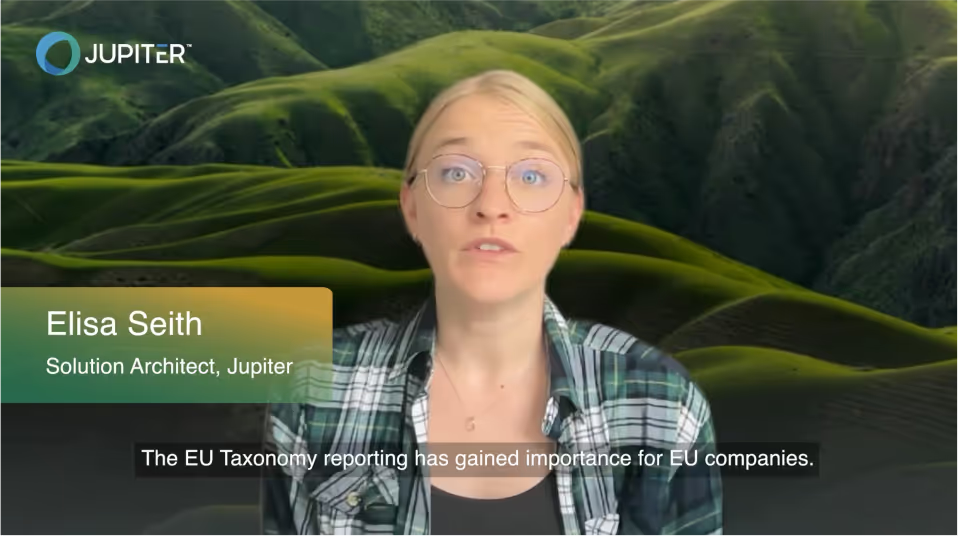Transcript
The EU Taxonomy reporting has gained importance for EU companies. Some already had reporting obligations last year, and this year the reporting scope has expanded. So - what is the EU Taxonomy and what does it have to do with physical climate risk?
The Taxonomy is a part of the European Green Deal, aimed at making the EU the “world's first climate neutral continent”. It allows consumers to invest sustainably in companies and sectors that contribute to the EU’s six environmental objectives.
The Sustainable Finance Package, introduced last year, includes the Taxonomy as a central component, basically acting as a "dictionary" for sustainable reporting directives to come. In particular, it will support the Sustainable Finance Disclosure Regulation (SFDR) and the new Corporate Sustainability Reporting Directive (CSRD).
To be considered a sustainable investment in the Taxonomy, companies must demonstrate significant contribution to one or more environmental objectives while avoiding harm to others. The second objective, climate change adaptation triggers the need for a physical climate risk assessment.
This assessment involves identifying relevant climate hazards, and then reporting on them across different time horizons and climate scenarios. And that’s where data providers like Jupiter have you covered. Reach out to us if you want to know more.
.webp)

